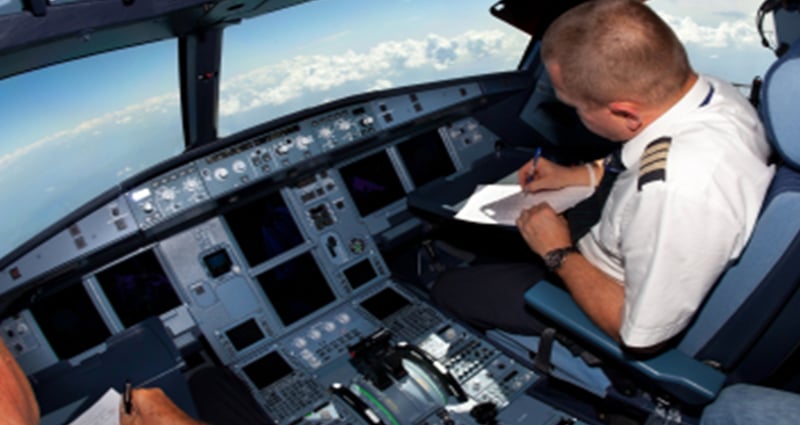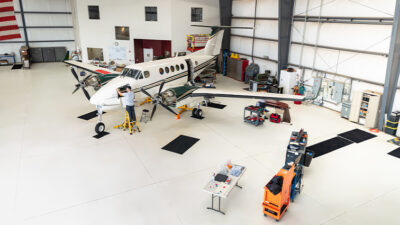Maximize Your Training Opportunities Spending the time to coordinate and customize

Cost control is a focus for many of us in the current economic environment. Initiatives to reduce fuel costs, delay capital investments and find more efficient ways to train are central themes in our flight department budgeting. Our largest training expense is simulator-based recurrent training. How can we get the best value out of our training dollar? Much like a flight, preparation is key.
Customize and Coordinate
Most flight departments operate in unique ways. They develop specific procedures, limitations and cultures that reflect their equipment, mission and experience. If training does not reflect these unique differences, it is not optimized. In fact, in some cases, generalized training can produce negative results.
But customized simulator-based training can be difficult to coordinate and customized training can be expensive. Large Part 142 training centers are generally reluctant to customize materials or even specify instructors. Having dozens of instructors who teach to a common curriculum creates schedule flexibility. One way to reduce costs and improve quality is to enter into a long-term partnership with a training vendor. Training providers are more likely to support your requests if they know you are loyal. The better your relationship with the trainer, the better your chances for customization.
The trainer’s commitment to a customized plan will vary depending on how far you diverge from a standard curriculum. Consider that you are responsible for training the instructor if your requested training differs significantly from the standard. Time is money.
Even in the best of cases, coordination does not mean you can send the training center a copy of your Flight Operations Manual and expect them to train to your procedures. Part 142 training centers must adhere to their FAA approved training syllabus when training Part 91 operators. Within those constraints you can still tailor your training experience. It takes no additional simulator time to have the crew use your EFB, fly a special departure procedure after the V1 cut, or calculate holdover times in the briefing room.
You may want to consider the value of meeting onsite with one of the facility’s training coordinators to discuss your “differences” training—well before the crew shows up at the simulator door. Your goal in this meeting should be to identify and deliver to the provider specific emphasis areas. You should create an agreed “Simulator Plan of Action.” The plan of action is what the instructor will use in the simulator to make sure your procedures are trained. Remember, the instructor may only see your crews once or twice a year and they will need a detailed briefing sheet that can be reviewed prior to your training events.
Here are some examples of emphasis areas:
- Potential hazards identified by your Safety Management System (SMS) program. Use of LPV minimums at uncontrolled airports is an example.
- Special departure, enroute or arrival procedures.
- New equipment you have added.
- Trends in incident reports.
- Your automation management procedures.
Special Considerations for Part 135
Because Part 135 operators use an FAA approved training manual, they have more flexibility. Part 135 operators are required to train according to their manual, not a Part 142 curriculum. Granted, most Part 135 operators training manuals look identical to their training partners Part 142 curriculum; however, with POI approval the curriculums can be edited to meet an operator’s specific training needs.
Future Trends
What if you could reduce your training overhead by 25% or even 50% but keep or improve the quality? The largest part of your training expense is probably allocated to full motion simulator training. Researchers at the Department of Transportation Volpe RITA center point out that “the most controversial issue in determining flight simulator requirements is how and whether to simulate airplane motion.” The primary limitation of motion-based simulators is they cannot generate sustained acceleration cues similar to what we feel in our aircraft. But motion can be “imagined” without actual physical motion as long as the eye perceives the changes associated with that motion. That’s what happens when people watch a movie in a specialized “Cinemax” theater.
The Volpe researchers have been studying the effect of motion on the effectiveness of training and have found that there is virtually no evidence that motion contributes to transfer of training across aircraft types, maneuvers and measures. Those studies have shown the transfer of the skills acquired in a simulator was found regardless of whether or not the simulator had motion. With the cost savings in non-motion simulation, it would be beneficial for regulators to focus on the effectiveness of the training device rather than the fidelity of the motion.
Imagine that with a capital expenditure of less than $250,000 you could have a type-specific trainer on location in your flight department to conduct mission-specific profiles like flying an instrument approach into Aspen the day before your trip, or to practice the one-engine inoperative departure procedure out of Aspen.
Review
You can maximize the return on your training dollars by spending some time coordinating and customizing that training. You will also be well-served by maintaining a long-term relationship with the training provider. Want to save big bucks? Stay open to the potential offered by state-of–the-art simulator options that emphasize all the sense cues—not just motion.
REFERENCES
Selection of studies by the FAA/Volpe Center on non-motion simulation:
- Training Value of a Fixed-Base Flight Simulator with a Dynamic Seat
- Transfer of Training from a Full-Flight Simulator vs. a High Level Flight Training Device with a Dynamic Seat
- The Effects of Enhanced Hexapod Motion on Airline Pilot Recurrent Training and Evaluation
- The Effect of Simulator Motion on Pilot Training and Evaluation
 Advanced Aircrew Academy
Advanced Aircrew AcademyAdvanced Aircrew Academy enables flight operations to fulfill their training needs in the most efficient and affordable way—in any location at any time. We do this by providing high quality professional pilot, flight/cabin attendant, flight coordinator, maintenance, and line service training modules delivered via the web using a world class online aviation training system.
https://www.aircrewacademy.com/
© 2025 Advanced Aircrew Academy. All Rights Reserved.
Next ArticleRelated Posts

Leadership, Accountability and Your Organization’s Risk Profile
Recent media attention has cast light on the unusual number of aviation system-related accidents, incidents and near-misses that have plagued our industry over the past several months.

Aviation Safety—Grounded!
When we talk about aviation safety, our attention often goes to aircraft operational concerns. They are important, but by no means do they represent all the risks in a flight department. So, what’s “the rest of the story”?

